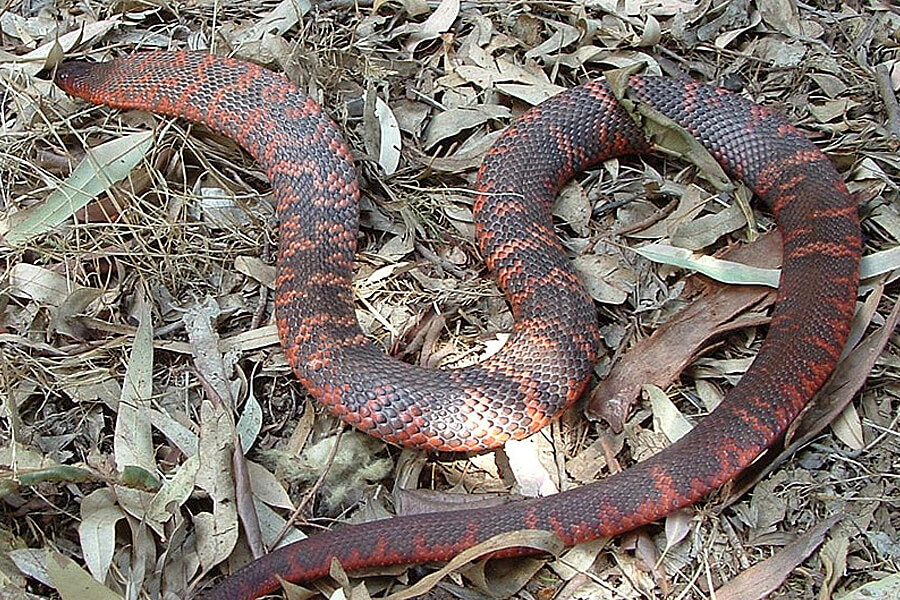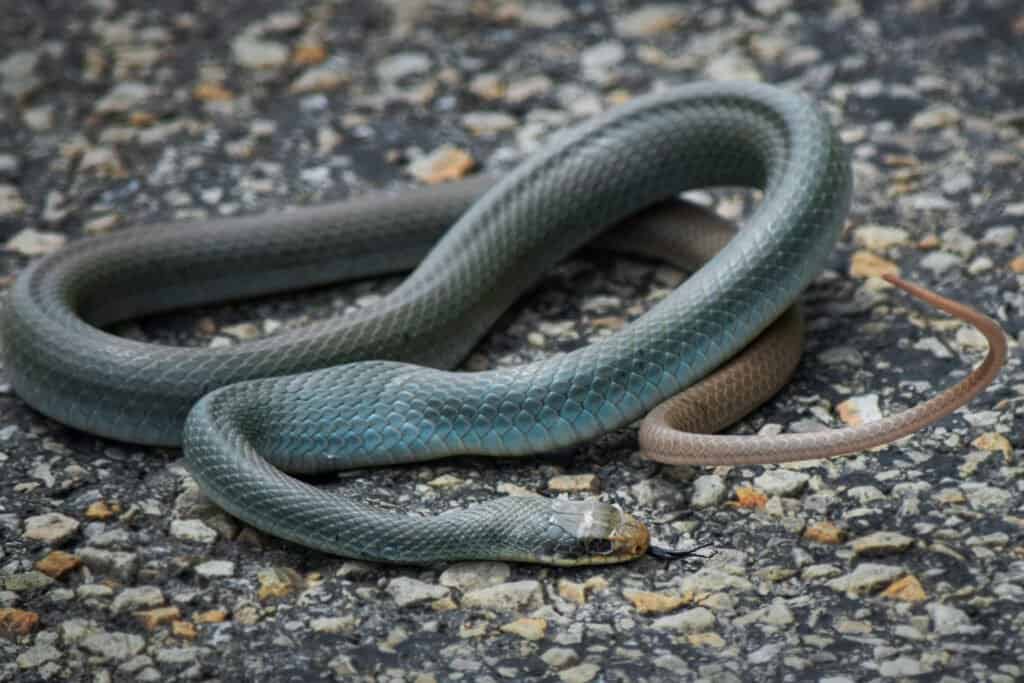Introduction
The Tasmanian tiger serpent, medically called Notechis scutatus, is among Australia's a lot of appealing reptiles. Located mainly in Tasmania and its surrounding islands, this snake has amassed Dugite Snake interest not just for its striking look yet also for its intricate behavior and crucial function in the environment. This write-up will explore the different elements of the Tasmanian tiger serpent's environment, habits, composition, and interactions with human beings while providing crucial info regarding safety measures in instance of a snake bite.

Whether you're a scientist, a wildlife fanatic, or just someone curious about these fascinating creatures, this thorough overview promises to deliver understandings that are both useful and interesting. So let's embark on this journey to comprehend the Tasmanian tiger serpent better!
The Tasmanian Tiger Snake: An Overview
Physical Attributes of the Tasmanian Tiger Snake
Tiger serpents are characterized by their distinctive pigmentation and patterns. They typically exhibit a mix of yellow or lotion red stripes on a dark brown or black history-- for this reason the name "tiger." Grown-up tiger serpents can mature to roughly 2.1 meters long, although the majority of people average around 1.5 meters.
Key Features:

- Coloration: Differs from dark brownish to olive environment-friendly with lighter bands. Size: Adults typically vary from 1.2 to 2.1 meters. Head Shape: Distinctly wide with noticeable eyes.
Distribution and Habitat of the Tasmanian Tiger Snake
The Tasmanian tiger serpent primarily occupies seaside regions, marshes, marshes, and grasslands in Tasmania. It prospers in settings where it can conveniently gain access to water sources because it is frequently found near streams or lakes.
Habitat Preferences:
- Wetlands: Suitable for searching victim like frogs and little mammals. Coastal Areas: Deals plentiful food resources. Grasslands: Provides cover and basking spots.
Understanding Tiger Serpent Behavior
Feeding Practices of the Tasmanian Tiger Snake
Tiger snakes are meat-eating and opportunistic feeders. Their diet plan is composed mainly of frogs, fish, little mammals, and birds. They depend on their eager eyesight and swift motions for hunting.
Dietary Break down:
- Frogs: A key component due to abundance in marsh habitats. Fish: Frequently caught when swimming in shallow waters. Small Creatures: Periodically exploit rodents.
Breeding Behavior of the Tasmanian Tiger Snake
Tiger snakes have a remarkable reproductive cycle. Mating usually takes place in spring after emerging from hibernation. Female tiger serpents bring to life live young rather than laying eggs, which is somewhat unique amongst reptiles.

Reproductive Cycle:
- Mating Season: Spring (September to November). Gestation Duration: About three months. Litter Dimension: Arrays from 20 to 40 child tiger snakes.
Aggression and Defense reaction of the Tasmanian Tiger Snake
Though they can be hostile when intimidated, tiger serpents commonly favor skillstrainingcollege.com.au to pull away as opposed to confront threat straight. Their main defense reaction consist of attacking when caught or displaying their dimension through hissing.
Defensive Methods:
- Hissing Sound: A caution signal showing distress. Bite Response: A last resource when escape options are limited.
Are Tiger Snakes Venomous? Comprehending Their Venom
Venom Make-up and Effects
Yes! The Tasmanian tiger serpent is poisonous. Its venom has neurotoxins that can cause serious damage or perhaps death if left untreated. The impacts of a bite can consist of paralysis, swelling at the bite website, nausea or vomiting, and various other systemic symptoms.
Venom Qualities:
- Neurotoxic Elements: Affect nerves functioning. Hemotoxic Effects: Can result in tissue damage.
Common Signs and symptoms Adhering to a Tiger Serpent Bite
Recognizing signs and symptoms quickly is critical for efficient emergency treatment management after a snake bite:
- Severe discomfort at bite site Swelling Nausea or vomiting Difficulty breathing
First Help for Snake Bites: What You Need to Know
Immediate Tips After a Tiger Serpent Bite
In case you come across a situation entailing a tiger serpent bite, it's important to act swiftly:
Call emergency situation solutions immediately. Keep the affected arm or leg paralyzed at heart level. Remove tight garments or precious jewelry around the bite site.Creating Your Snake Bite First Aid Kit
Having an appropriately stocked first aid package can make all the difference throughout emergencies:|Product|Objective|| ------|---------|| Compression bandage|To immobilize limb|| Splint|To maintain hurt location|| Antibacterial wipes|For cleaning up wounds|
FAQs Regarding the Tasmanian Tiger Snake
What do infant tiger snakes eat?
Baby tiger snakes largely feed on tiny pests and amphibians until they grow large enough to quest larger prey like frogs or small fish.
How unsafe is a tiger snake bite?
A tiger serpent bite can be exceptionally hazardous as a result of its powerful venom; instant medical attention is crucial for survival.
Where are eastern tiger snakes found?
Eastern tiger snakes occupy coastal areas throughout southeastern Australia but are less typical than their Tasmanian counterparts.
What should I do if I see a tiger snake?
Maintain your distance; do not attempt to manage it unless you're educated to do so-- most bites occur throughout efforts at capture or mishandling.
Can I endure without antivenom after being bitten?
While some individuals may survive without antivenom relying on various aspects such as health and wellness problems and time considered therapy; seeking immediate clinical aid is always advised as it dramatically increases survival chances.
Are there any particular precaution I must take while hiking in Tasmania?
Always wear durable boots, remain on significant routes, stay clear of high turf first aid care for snake bite - Skill's Training College where exposure may be restricted; acquaint on your own with local wild animals prior to going out right into nature!
Conclusion
The Tajamanian tiger serpent represents a crucial part of Australia's abundant biodiversity landscape both environmentally as killers and culturally as symbols within Australian folklore. Understanding their environment choices along with actions offers understanding right into just how we can exist together securely while appreciating wild animals boundaries-- bearing in mind that awareness leads us towards more secure journeys outdoors!
By staying notified concerning prospective threats such as envenomation from bites while additionally taking safety nets makes certain positive experiences when coming across these interesting creatures!
In verdict, whether you're captivated by their striking appearance or captivated by their complex behaviors-- the Tasmanian tiger snake definitely should have acknowledgment beyond mere attraction-- it encapsulates nature's elegance intertwined intricately within our ecosystems!